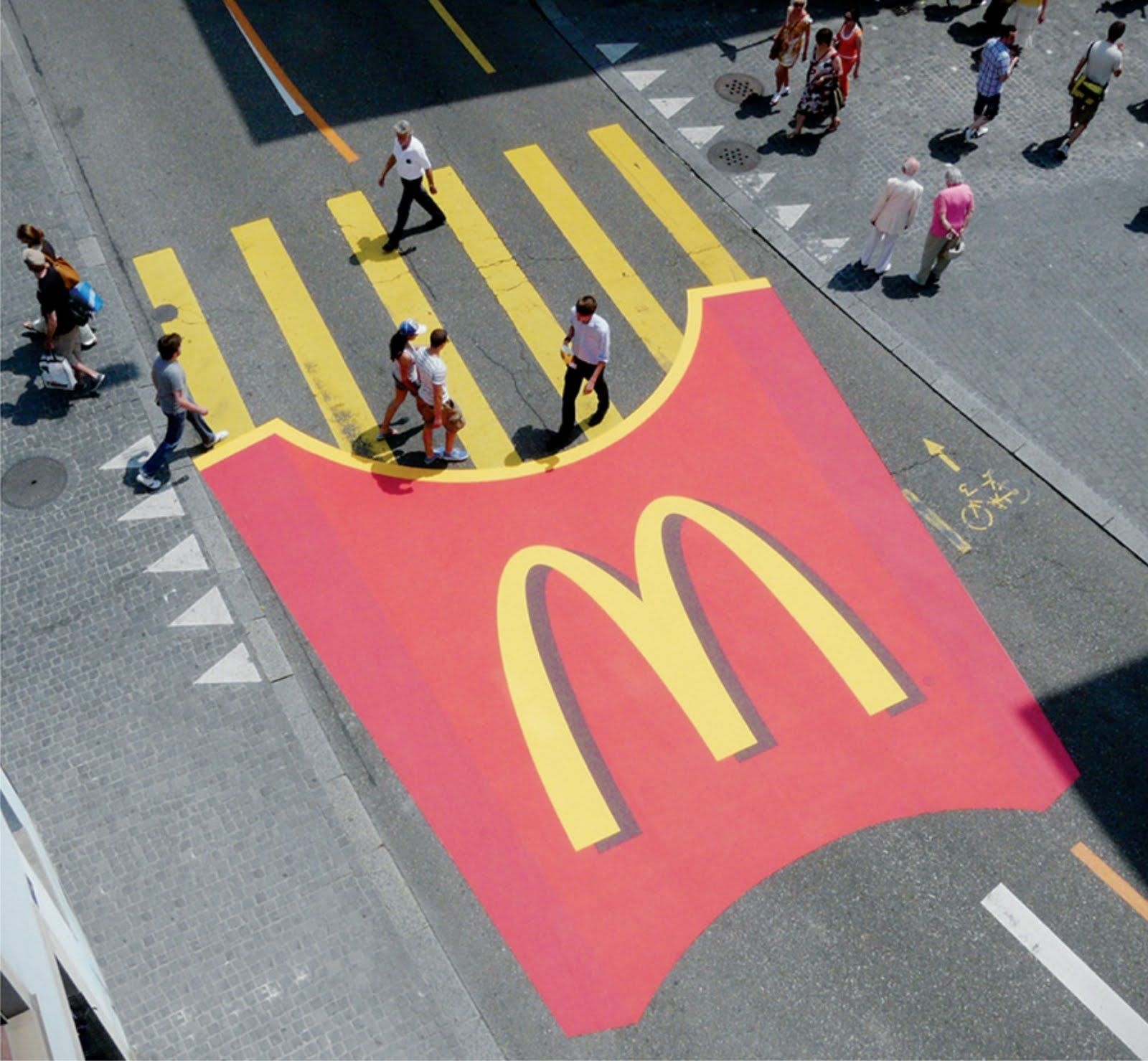Examples of guerrilla marketing – promotion through creativity in advertising with a small budget

Many have heard of the term guerrilla marketing, but few have really resorted to it, and it is an excellent, inexpensive and creative tool for promotion. Guerrilla marketing is original, as can be understood from the name. As partisans arrange sabotage, so do guerrilla marketers come up with a creative bomb. The main thing is not memorized marketing and promotion methods, but creativity and time. Large companies also use guerrilla marketing techniques very successfully. A little background. The term "Guerilla Marketing" was coined by American writer and former creative director of advertising Jay Conrad Levinson in his 1984 book Guerrilla Marketing. The book was written for small businesses and offered low-cost promotion methods. Levinson did not give a specific definition of the term, but firmly established it in the world of marketing. The idea of guerrilla marketing is the use of psychology, cheap advertising media and squeezing the maximum benefit out of them. Unlike classical marketing, where it takes a long time to calculate and invent, measure indicators, guerrilla marketing is easy to manage and is estimated by profit. What is the essence of guerrilla marketing? Guerrilla marketing is aimed at establishing and maintaining contact with the client, thinking about what he can give to the buyer. It is focused on details, collaborations with businesses with similar goals, and the collection of new contacts. Offers pictures, memes that verbally and easily convey meanings. Guerrilla marketing is a kind of dialogue with the client, with an unobtrusive sale – often the client does not even understand what is being sold to him. The key to the success of guerrilla marketing is the study of the consumer and his psychology, knowing what he needs and how to attract his attention, a well-thought-out combination of marketing tools and their implementation, and, of course, time and creativity.
Methods and techniques of guerrilla marketing To understand guerrilla marketing, you need to look at it. Several main types of guerrilla marketing are effective now: Word of mouth/recommendations – when people recommend you themselves. Come up with a nice incentive for existing customers and they will be happy to tell their colleagues and friends about you. Word of mouth is a very effective tool in the vastness of our country, because the recommendations of a girlfriend are trusted more than a billboard. Ambush marketing is an ambush marketing when a company tries to tie itself to an event without being an official sponsor. It first appeared in the 1980s at sporting events, now it is not limited to them. Companies often resort to "ambushes" when official participation as a sponsor does not justify the costs or the terms of participation are unacceptable. The task is to draw the attention of the participants of the event.
Viral/viral content — memes, pictures, videos — is something that people like, does not make them think and delve into it for a long time, conveys the meaning in an easy form and that a person is happy to share, forwarding to friends and acquaintances. The costs of creation and distribution are free. Burger King has long been famous as a noble troll of competitors and his aggressive advertising, which quickly flows from banners and billboards to the Internet.
Shocking. Provocative shocking effect is a subtype of viral content.
Hidden marketing. Unobtrusive, casually mentioned advertising. The most popular product placement formats in movies, TV shows, blogs, etc. For example, the character goes to the shower and is shown what shampoo he uses. Native advertising, when presented easily, as sincere admiration or a desire to share, is often used by bloggers.
Colgate and ice cream ads. A toothbrush-like stick speaks of the need to brush your teeth after sweets.
Ambient Marketing – the environment becomes the main platform, playing with any object in an interesting way, drawing attention to the company.
Since the end of 2022, neural networks have become an excellent assistant for creatives, and there are more and more materials created with the help of AI every day.
In the first place, McDonald's ran an ad with ChatGPT's answer to the question "What is the most iconic burger in the world?" with the answer "the most iconic burger in the entire world is Big Mac". Burger King didn't hesitate to ask the AI "Which is the biggest?" the answer is "Whopper from Burger King" and placed the poster next to it. Remember that guerrilla marketing is creative, unexpected, and memorable. This is what makes it a riskier format. Be prepared for possible hatred for excessively original creativity, try not to break the law and not get into the FAS commission.
- Arts
- Business
- Computers
- Spiele
- Health
- Startseite
- Kids and Teens
- Geld
- News
- Recreation
- Reference
- Regional
- Science
- Shopping
- Society
- Sports
- Бизнес
- Деньги
- Дом
- Досуг
- Здоровье
- Игры
- Искусство
- Источники информации
- Компьютеры
- Наука
- Новости и СМИ
- Общество
- Покупки
- Спорт
- Страны и регионы
- World


